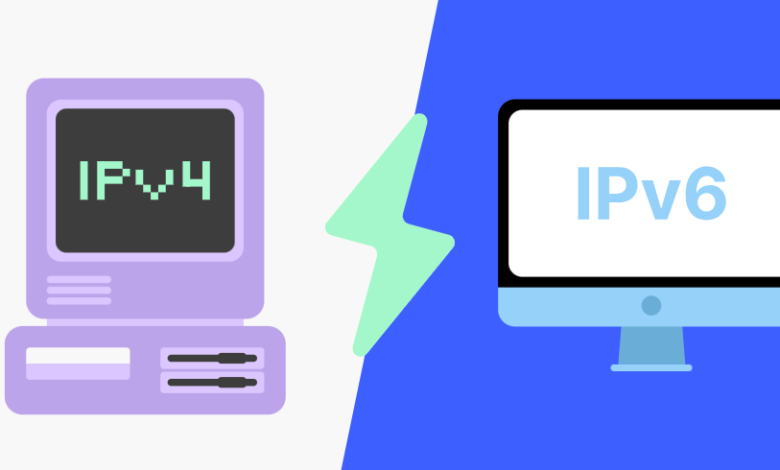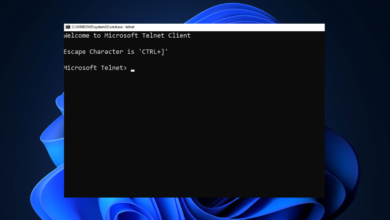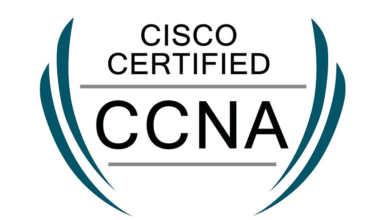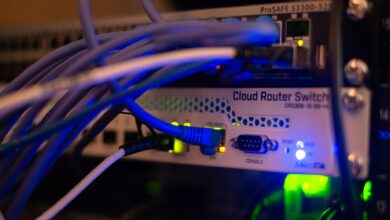What Is the Difference Between IPv6 and IPv4

What powers the seamless flow of data across the digital realm? As the backbone of internet communication, IP addresses serve as unique identifiers, guiding data from one device to another. But as our interconnected world expands, two protocols IPv6 and IPv4 emerge as distinct players in this system. While IPv4 laid the foundation for the internet, IPv6 promises a more secure and scalable future. What are the differences between them, and why does it matter? Discover how these protocols shape network efficiency, security, and our digital evolution, and see why understanding them is essential for the demands of tomorrow.
Table of Contents
What is IP ? ( IPv6 and IPv4 )
IP, or Internet Protocol, is the primary framework that enables devices to communicate across networks, acting as the unique “addressing” system of the digital world. It facilitates data exchange by assigning each device a distinctive identifier, making sure data packets find their way to the correct destination. IPv6 and IPv4 are the two principal versions of this protocol, each with specific roles in network connectivity. IPv4, the earlier version, provides a 32-bit address space, allowing for around 4.3 billion unique addresses.
However, with the internet’s exponential growth, IPv6 emerged to accommodate expanding networks, offering a 128-bit address structure that supports an almost infinite number of addresses. Together, IPv6 and IPv4 enable the vast interconnectivity of devices, ensuring efficient and reliable digital communication across the globe.
Types of IP Addresses
| IP Address Type | Description | Usage | Key Features |
| Public IP Addresses | Globally unique addresses assigned to devices that need to communicate openly over the internet. They are allocated by the Internet Assigned Numbers Authority (IANA) and regulated through regional internet registries. | Primarily used for servers, routers, and other devices requiring direct, remote access via the internet. | – Managed by IANA and regional bodies, ensuring no two devices globally share the same public IP. – Security Consideration: Public IPs are susceptible to external threats, so devices with public IPs often have firewall and VPN protection. – Allows direct, global access for external device interaction. |
| Private IP Addresses | Addresses reserved for internal network use only, such as in homes, businesses, or institutional networks, and are not directly reachable from outside these networks. | Utilized for local devices like personal computers, printers, or IoT devices within a single network. | – Defined ranges include 10.0.0.0 – 10.255.255.255, 172.16.0.0 – 172.31.255.255, 192.168.0.0 – 192.168.255.255. – Enables Network Address Translation (NAT) to translate private IPs to public for internet access. – Enhances security by keeping devices hidden from external networks. |
| Static IP Addresses | Fixed IPs manually assigned to devices that require a permanent address, avoiding change over time, which provides reliability and predictability. | Ideal for servers, remote-access devices, and network infrastructure requiring continuous availability. | – Suitable for devices that need to be accessed reliably and consistently, such as a company’s web or email server. – Reduced downtime since there’s no need to re-establish connections. – Costlier in some cases due to limited availability and higher setup requirements. |
| Dynamic IP Addresses | Temporary addresses assigned by a Dynamic Host Configuration Protocol (DHCP) server, changing with each new network session or periodically, based on lease time. | Used broadly in home networks, public Wi-Fi, and devices not requiring a fixed IP. | – Efficiency: Conserves IP resources by reallocating IPs as devices join or leave a network. – Cost-effective: Reduces the need for manual configuration; DHCP servers handle assignment automatically. – Adds a layer of privacy, as IP addresses vary over time. |
| Loopback IP Addresses | Special address used within a device for self-communication, typically used in diagnostic testing to ensure that the device’s network stack is functioning. | Primarily for diagnostics; helps confirm internal device configurations and software connectivity. | – Commonly 127.0.0.1 in IPv4 and ::1 in IPv6. – Does not require external network access, operating only internally on the device. – Allows developers and administrators to test network applications without actual network traffic. |
| APIPA Addresses | Automatic Private IP Addressing (APIPA) assigns an IP when DHCP is unavailable, allowing limited communication in local networks. | Used temporarily when DHCP is down or unreachable, allowing basic device-to-device communication. | – Uses the range 169.254.0.0 – 169.254.255.255. – Enables limited connectivity, suitable for small networks or temporary scenarios. – Devices can communicate within the local network but cannot access the internet without proper DHCP assignment. |
| Multicast IP Addresses | IPs designated for one-to-many communication, enabling a single source to simultaneously broadcast data to multiple recipients, widely used in media streaming and conferencing. | Supports applications requiring real-time data sharing, such as live-streamed events, conferencing, and group communications. | – Efficiently reduces bandwidth usage by sending data only once for multiple recipients. – IPv4 Range: 224.0.0.0 to 239.255.255.255; IPv6 uses unique ff00::/8. – Common in IPTV, video conferencing, and multimedia applications requiring simultaneous transmission. |
What is IPv4?
IPv4, or Internet Protocol version 4, is the fourth iteration of the protocol that governs how data packets are addressed and routed on the internet. Introduced in the early 1980s, it utilizes a 32-bit address scheme, allowing for approximately 4.3 billion unique addresses. Each address consists of four octets, typically represented in decimal format, such as 192.168.1.1. While IPv4 has been foundational in establishing internet connectivity, its limitations have become apparent due to the explosive growth of online devices and services.
As a result, the transition to IPv6 has become imperative. Unlike IPv4, which is constrained by its finite address space, IPv6 offers a vastly expanded range, accommodating the ever-increasing demand for unique addresses. Despite these advancements, IPv4 remains widely used, underpinning many legacy systems and networks, reflecting its enduring legacy in the evolution of internet technology.
The transition from IPv4 to IPv6 is not just an upgrade; it’s a necessary evolution for a truly connected future, enabling seamless communication in an era defined by IPv6 and IPv4.
IPv4 Address Format
The IPv4 address format employs a 32-bit numerical label, typically depicted as four octets separated by periods, such as 192.168.0.1. Each octet can range from 0 to 255, allowing for a total of approximately 4.3 billion unique addresses. This format is a crucial aspect of how devices identify and communicate over networks.
Each section of the address contributes to the overall identity, with the first octets often indicating the network, while the latter represent individual devices within that network. This hierarchical organization is vital for routing data efficiently across the internet.
As the digital landscape has expanded, the limitations of IPv4 have become apparent, especially concerning address exhaustion. This challenge has led to the development of IPv6, which offers an exponentially larger address space. Nonetheless, the IPv4 address format remains foundational to understanding modern networking and the ongoing transition to newer protocols.
As we navigate the complexities of modern networking, understanding the differences between IPv6 and IPv4 is crucial for building a robust and secure digital infrastructure.
Drawback of IPv4
- Address Exhaustion
- With approximately 4.3 billion unique addresses, the limited pool has been exhausted due to the rapid growth of internet-connected devices.
- Complex Address Management
- To cope with address scarcity, techniques like Network Address Translation (NAT) are required, complicating network configurations and reducing direct device communication.
- Security Vulnerabilities
- IPv4 was not designed with built-in security features, making networks susceptible to threats like spoofing, eavesdropping, and denial-of-service attacks.
- Lack of End-to-End Connectivity
- NAT and similar techniques can disrupt direct communication between devices, affecting the performance of applications that rely on peer-to-peer connectivity.
- Inefficient Routing
- The hierarchical structure of IPv4 can lead to suboptimal routing, especially as networks scale, resulting in increased latency and reduced efficiency.
- Limited Mobility Support
- IPv4 struggles with the demands of mobile devices, which require seamless connectivity as they move between different networks.
- Incompatibility with Modern Applications
- As applications become more sophisticated and data-driven, the limitations of IPv4 hinder the ability to support advanced functionalities, necessitating a transition to IPv6.
What is IPv6?
IPv6, or Internet Protocol version 6, is the successor to IPv4, designed to address the limitations of its predecessor. With a 128-bit address space, IPv6 provides a staggering number of unique addresses—approximately 340 undecillion (3.4 x 10^38) options. This expansion is crucial in accommodating the burgeoning number of devices connected to the internet, particularly with the rise of the Internet of Things (IoT).
The IPv6 address format is significantly different from IPv4, employing eight groups of four hexadecimal digits separated by colons, such as 2001:0db8:85a3:0000:0000:8a2e:0370:7334. This structure not only increases address capacity but also incorporates features designed to enhance security and improve routing efficiency.
Moreover, IPv6 includes built-in security measures, such as IPsec, which provide data integrity and confidentiality. As the internet evolves, transitioning from IPv4 to IPv6 becomes essential to ensure sustainable growth and connectivity.
In the world of networking, embracing IPv6 and IPv4 allows us to overcome limitations, ensuring every device can connect and communicate effectively in an ever-expanding digital landscape.
IPv6 Address Format
The IPv6 address format represents a monumental advancement over its predecessor, IPv4. Utilizing a 128-bit address scheme, it allows for an astronomical number of unique addresses—approximately 340 undecillion options (3.4 x 10^38). This vast capacity is essential to support the ever-growing number of internet-connected devices.
An IPv6 address is typically written in hexadecimal format, divided into eight groups of four hexadecimal digits, separated by colons. For example, a valid IPv6 address may appear as 2001:0db8:85a3:0000:0000:8a2e:0370:7334. This structure significantly enhances address allocation efficiency and routing.
Several features distinguish the IPv6 address format from IPv4:
- Zero Compression: Leading zeros in each group can be omitted, allowing for addresses like 2001:db8:85a3::8a2e:370:7334, where the double colon represents contiguous blocks of zeros.
- Scope: IPv6 addresses can be categorized into several types, including global, link-local, and unique local addresses, each serving specific networking purposes.
- Multicast Capability: Unlike IPv4, IPv6 supports multicast addressing, enabling a single packet to be sent to multiple destinations, thereby optimizing network traffic.
Difference Between IPv6 and IPv4

| Feature | IPv4 | IPv6 |
| Address Length | 32 bits – Allows for approximately 4.3 billion unique addresses. The limited size leads to address exhaustion as the number of devices grows. | 128 bits – Provides around 340 undecillion (3.4 x 10^38) unique addresses, vastly exceeding the needs of the modern internet. |
| Address Format | Decimal format – Represented as four octets, such as 192.168.1.1, making it easier for humans to read but less efficient for machines. | Hexadecimal format – Written as eight groups of four hexadecimal digits separated by colons (e.g., 2001:0db8:85a3::1), optimizing storage and representation. |
| Total Address Space | ~4.3 billion unique addresses – This limitation has led to the adoption of techniques like Network Address Translation (NAT) to conserve address space. | ~340 undecillion unique addresses – The vast space ensures that every device can have a unique address, eliminating the need for NAT in most cases. |
| Address Representation | Four octets separated by periods – Each octet can range from 0 to 255. | Eight groups of four hexadecimal digits – Groups can be shortened by omitting leading zeros, enhancing usability (e.g., 2001:db8::1). |
| Address Types | Unicast, Broadcast, Multicast – IPv4 supports these types, but broadcasting can lead to network congestion. | Unicast, Multicast, Anycast – Supports more efficient data transmission methods, allowing packets to be sent to multiple destinations simultaneously (multicast) or the nearest node (anycast). |
| NAT Requirement | Commonly used – NAT helps manage the limited address space but complicates communication and can introduce latency. | Not required – The expansive address space of IPv6 eliminates the need for NAT, allowing for direct device communication. |
| Configuration | Manual or DHCP – Configuring IPv4 addresses can be manual or through Dynamic Host Configuration Protocol (DHCP). | SLAAC and DHCPv6 – Supports Stateless Address Autoconfiguration (SLAAC), allowing devices to self-configure, along with DHCPv6 for more managed environments. |
| Security | Limited security features – Security was not inherently designed into the protocol, making it vulnerable to various attacks. | Built-in security (IPsec) – IPv6 was designed with security in mind, incorporating IPsec for data integrity and confidentiality. |
| Fragmentation | Routers and hosts can fragment packets – Fragmentation can complicate data transmission and lead to performance issues. | Only the source can fragment packets – Simplifies processing for routers, as they do not need to handle fragmentation, reducing overhead. |
| Header Complexity | Simpler, less overhead – The header is relatively straightforward, with fewer fields, allowing for quicker processing. | More complex due to additional features – The IPv6 header contains more fields, which can provide additional functionality but may introduce processing overhead. |
| Mobility Support | Limited mobility features – IPv4 lacks built-in mechanisms for supporting devices that frequently change networks. | Improved mobility features – Designed to support mobile devices better, enabling seamless connectivity as devices move across networks. |
| Subnets | Class-based addressing – Uses classes (A, B, C) for subnetting, leading to inefficient address usage. | Hierarchical addressing – IPv6 uses a more flexible and efficient hierarchical structure for subnets, enhancing routing and organization. |
| Global Addressing | Less efficient global addressing – IPv4 addresses can become cumbersome to manage, leading to inefficiencies in routing. | More efficient global addressing – The structure of IPv6 allows for streamlined routing and better aggregation of addresses, improving overall network efficiency. |
Benefits of IPv6 over IPv4
- Vast Address Space
IPv6 offers an astronomical address space, accommodating approximately 340 undecillion unique addresses. This eliminates the scarcity issues faced with IPv4, ensuring every device can have a unique identifier. - Simplified Address Configuration
With features like Stateless Address Autoconfiguration (SLAAC), IPv6 enables devices to configure their own addresses automatically. This streamlines network management compared to the manual configuration often required in IPv4. - Enhanced Security Features
IPv6 incorporates built-in security protocols, such as IPsec, providing robust encryption and authentication capabilities that are not inherent in IPv4, making networks more secure. - Improved Routing Efficiency
The hierarchical address structure of IPv6 allows for more efficient routing, reducing the size of routing tables and optimizing network performance compared to IPv4. - Better Multicast Support
IPv6 enhances multicast capabilities, enabling the transmission of data to multiple recipients simultaneously, thereby reducing network congestion and improving resource utilization.
Conclusion
In conclusion, the evolution from IPv6 to IPv4 marks a pivotal shift in internet protocol design. The limitations of IPv4, particularly its constrained address space and lack of built-in security, have become increasingly apparent as the number of internet-connected devices continues to surge. IPv6 not only addresses these challenges with its expansive address availability but also enhances security, routing efficiency, and overall network performance. As the digital landscape evolves, embracing IPv6 and IPv4 becomes imperative for sustainable growth and innovation. Transitioning to this advanced protocol ensures a robust and secure framework for future internet connectivity, paving the way for a more interconnected world.
FAQs on IPv6 and IPv4
- What is the primary difference between IPv6 and IPv4?
The main difference lies in their address capacity; IPv4 supports approximately 4.3 billion addresses, while IPv6 can accommodate around 340 undecillion addresses. - Why is there a need to transition from IPv4 to IPv6?
The limited address space of IPv4 has led to address exhaustion, necessitating the transition to IPv6, which offers a vastly larger address pool and improved security features. - How do IPv6 and IPv4 handle security differently?
IPv4 has limited security protocols, whereas IPv6 was designed with built-in security features, including IPsec, to enhance data integrity and confidentiality. - Can IPv6 and IPv4 work together?
Yes, IPv6 and IPv4 can coexist in a hybrid network environment during the transition phase, allowing devices to communicate using both protocols. - What are the benefits of using IPv6 over IPv4?
Benefits of IPv6 include a larger address space, simplified address configuration, better routing efficiency, and enhanced security compared to IPv4. - Is IPv6 adoption widespread?
While IPv6 adoption has been growing, many networks still rely on IPv4. However, major internet service providers and companies are increasingly implementing IPv6 to prepare for the future.





Thank you for your sharing. I am worried that I lack creative ideas. It is your article that makes me full of hope. Thank you. But, I have a question, can you help me?